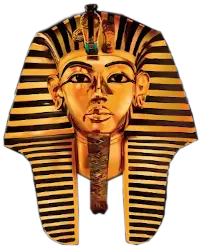
Phoenicia and Thrace. These were under the government of wise men, who not only subdued the ferocity of an ignorant populace by civil institutions, but also cast about them the strong chain of religion and the fear of the gods. Whatever dogmas they had been taught in their respective countries, concerning things divine and human, they delivered to these newly formed societies, with the object of bringing them under the restraint of virtuous discipline. Phoroneus and Cecrops were Egyptians, Cadmus a Phoenician and Orpheus a Thracian, and each of them, through their colonies carried into Greece the religious and philosophical tenets of his respective country.
The practice of teaching the doctrines of religion to people under the guise of myths originated from the Egyptians and was adopted by the Phoenicians and Thracians, and subsequently introduced to the Greeks.
According to Strabo, it was not possible in ancient times to lead a promiscuous multitude to religion and virtue by philosophical harangues. This could be effected only by the aid of superstition, by prodigies and fables. The thunder bolt, the aegis, the trident, the spear, torches and snakes were the instruments made use of by the founders of States, to terrify the ignorant and vulgar into subjection. These references must speak for themselves.
Cheops and Cecrops were the names which the Greeks used for the Egyptian Khufu, who belonged to the 4th Dynasty of the Egyptians or the pyramid age, i.e., 2800 B.C.
(Strabo Bk. I; Brucker's Historia Critica Philosophiae with translation by Wm. Enfield: Bk. II p. 62).
4. Alexander Visits the Oracle of Ammon in the Oasis of Siwah.
No discussion on Alexander's invasion of Egypt would be complete without reference to his famous visit to the Oracle of Ammon, situated in the Oasis of Siwah. Alexander had placed a garrison in Pelusium, whence he marched through
Topics
Greek Philospohy is Stolen Egyptian Philosophy
The Memphite Theology is the Basis of all Important Doctrines of Greek Philosophy
Greek Philosophy was Alien to the Greeks
Greek Philosophy was the offspring of the Egyptian Mystery System
The Egyptians Educated the Greeks
The Curriculum of the Egyptian Mystery System
The Pre-Socratic Philosophers and the teaching Ascribed to them
The Athenian Philosophers
1. Socrates
2. Plato
3. Aristotle